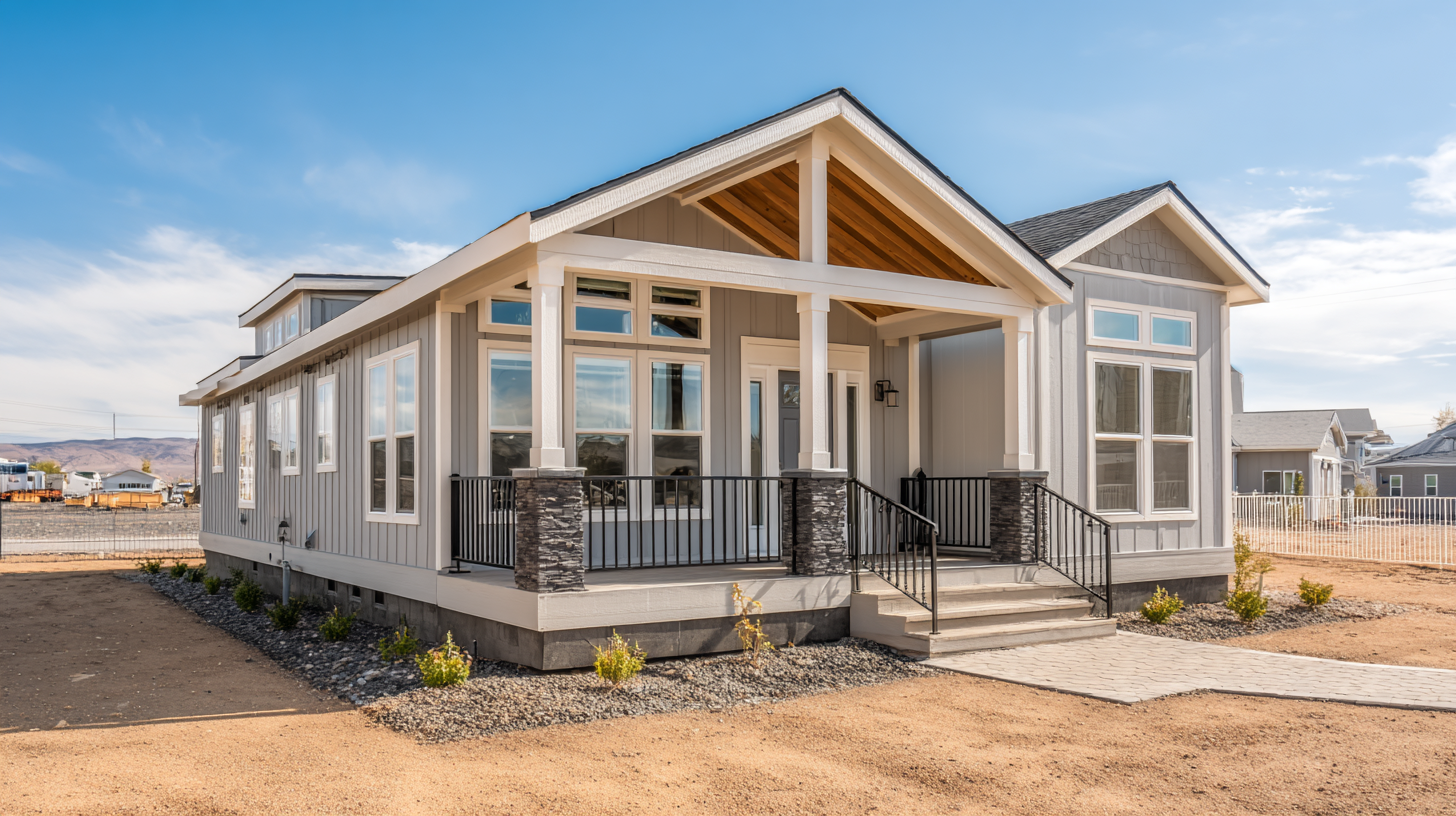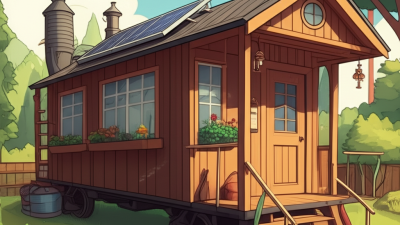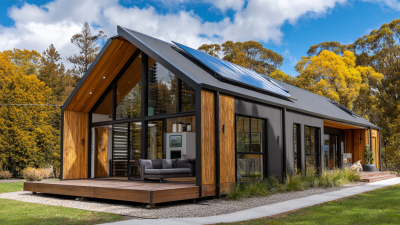Exploring the Benefits and Future of Premanufactured Homes: A New Era in Housing Solutions
As the demand for affordable and sustainable housing continues to rise, the spotlight is increasingly turning towards premanufactured homes as a viable solution. According to a report from the National Association of Home Builders (NAHB), the market for factory-built homes has been steadily growing, achieving a 9% share of new single-family homes sold in 2021. This trend speaks to the changing landscape of housing development, where efficiency, cost-effectiveness, and environmental sustainability are more critical than ever.

Premanufactured homes are designed not only to address the pressing housing shortage but also to meet the increasing demand for energy-efficient living spaces. The U.S. Department of Energy emphasizes that these homes can reduce energy consumption by an average of 20-30%, thanks to their advanced materials and construction techniques. As innovations in design and technology continue to evolve, premanufactured homes are becoming increasingly customizable, appealing to a broader range of consumers looking for quality and affordability. This exploration into the benefits and future of premanufactured homes reveals a promising potential for revolutionizing the housing market and fulfilling the aspirations of homebuyers seeking modern living solutions.
Benefits of Premanufactured Homes: Cost Efficiency and Affordability Statistics
Premanufactured homes, often viewed as a modern housing alternative, are gaining traction due to their significant cost efficiency and affordability. The rapid construction process allows manufacturers to produce homes at a fraction of the cost compared to traditional building methods. According to recent statistics, the price per square foot for premanufactured homes can be up to 20-30% lower than site-built homes, making them an attractive option for first-time buyers and those looking to downsize.
Moreover, the affordability of premanufactured homes extends beyond initial purchase costs. Lower energy consumption during manufacturing and efficient design options lead to long-term savings on utility bills. In addition, many premanufactured homes are designed with sustainability in mind, using eco-friendly materials and practices that reduce the environmental impact while further driving down costs over time. This combination of affordability and efficiency makes premanufactured homes a practical solution for the growing housing crisis, appealing to a diverse range of consumers seeking economically viable housing options.
Environmental Impact: Sustainability in Material Use and Energy Efficiency
The growing interest in premanufactured homes stems not only from their affordability and efficiency but also from their reduced environmental impact. According to a report by the U.S. Department of Energy, homes account for approximately 22% of national energy consumption. However, premanufactured homes can significantly mitigate this by employing sustainable materials and advanced energy-efficient technologies. For instance, many manufacturers utilize recycled steel, bamboo, and other sustainable materials, which lessen the carbon footprint associated with traditional construction.
Energy efficiency is another critical aspect of premanufactured homes. A study from the National Renewable Energy Laboratory shows that modular and manufactured homes can achieve up to 30% better energy efficiency compared to conventional homes, thanks to their integrated designs and modern insulation techniques. Additionally, many of these homes are equipped with renewable energy systems, such as solar panels, which can further reduce reliance on grid electricity and contribute to long-term sustainability. As we move towards a more eco-conscious future, the adoption of premanufactured homes aligns perfectly with the need for greener housing solutions that benefit both residents and the environment.
Market Trends: Growth Projections for the Prefabricated Housing Industry
The prefabricated housing industry is experiencing remarkable growth, with projections indicating a substantial rise in market value in the coming years. In 2024, the global prefabricated concrete market is expected to reach $151.49 billion, escalating to $246.07 billion by 2032. Similarly, the multi-unit modular and prefabricated housing sector, valued at approximately $21.8 billion in 2023, is forecasted to surge to $49.05 billion by 2033. These figures underscore the increasing demand for innovative housing solutions, driven by urbanization and a focus on sustainability.
**Tips:** When considering investment in prefabricated homes, look for companies that prioritize eco-friendly materials and energy-efficient designs. Keeping an eye on market trends can help identify potential opportunities. Additionally, understanding regional demands can assist in making informed decisions, especially in areas experiencing rapid growth in modular construction.
North America is poised to be a significant player in this expansion, with its modular building market projected to grow at a compound annual growth rate of 7.5%, reaching $40.62 billion by 2032. This growth is indicative of a shift towards more customizable and affordable housing options. As we enter this new era of housing solutions, the prefabricated sector not only offers modern designs but also promotes sustainable practices essential for future living.
**Tips:** Engage with local builders who specialize in modular construction to gain insights on the latest innovations in the market. Networking with professionals in the industry can provide valuable information on best practices and emerging technologies in prefabricated housing.
Exploring the Benefits and Future of Premanufactured Homes: A New Era in Housing Solutions
| Metric | 2020 | 2021 | 2022 | Projected 2023 | Projected 2025 |
|---|---|---|---|---|---|
| Market Size (Billion USD) | 10 | 12 | 14 | 16 | 20 |
| Annual Growth Rate (%) | 5 | 5.5 | 6 | 7 | 8 |
| Units Sold (Thousands) | 150 | 180 | 200 | 220 | 300 |
| Top Market Segment (%) | Single Family | Multifamily | Single Family | Single Family | Multifamily |
| Sustainability Focus (%) | 30 | 35 | 40 | 45 | 50 |
Innovations in Design: Customization and Technological Advancements in Manufacturing
The evolution of pre-manufactured homes has ushered in a new era of innovative design that emphasizes customization and technological advancements. One of the most significant benefits of these homes is the ability to tailor designs to individual preferences. Homebuyers can select layouts, materials, and finishes that reflect their unique tastes, moving away from the cookie-cutter approach that has historically characterized traditional homebuilding. This level of personalization not only enhances the overall aesthetic appeal but also gives homeowners a profound sense of ownership and pride in their space.

Technological advancements in manufacturing have further revolutionized the pre-manufactured home industry. Modern construction techniques, such as modular building and 3D printing, allow for rapid assembly while maintaining high-quality standards. Innovations in sustainable materials and energy efficiency also play a crucial role, as manufacturers focus on creating homes that not only meet but exceed contemporary environmental standards. These developments not only reduce construction waste and energy consumption but also ensure that pre-manufactured homes are equipped with smart technology for enhanced living experiences. As we look to the future, the combination of customization options and advanced manufacturing promises to redefine how we think about housing solutions.
Regulatory Challenges and Solutions: Navigating Local Codes and Standards for Premanufactured Homes
Navigating the regulatory landscape for premanufactured homes is a complex but crucial aspect of their integration into mainstream housing solutions. As the demand for affordable housing options increases—with the National Association of Home Builders reporting a 21% rise in interest over the past two years—local building codes and standards often lag behind the innovations in manufacturing techniques. Many regions lack clear guidelines specific to premanufactured homes, leading to inconsistencies that can hinder their adoption.

To tackle these challenges, various stakeholders are advocating for standardized regulations that would facilitate the approval and deployment of premanufactured homes. According to a report by the The Modular Building Institute, addressing these regulatory barriers could result in a potential increase of 70% in the acceptance of premanufactured housing over the next decade. This shift would not only streamline the construction process but also encourage more sustainable building practices, as premanufactured homes typically boast a reduced carbon footprint compared to traditional methods. As the industry evolves, collaboration between manufacturers, local governments, and regulatory bodies will be essential in shaping a future that embraces the benefits of premanufactured homes.

